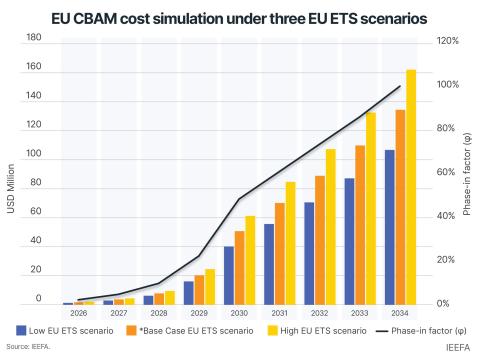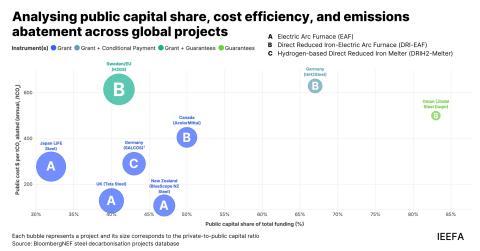Sustainable finance in Asia: A comparative study of national taxonomies
Download Full Report
View Press Release

Key Findings
Sustainable finance and green taxonomies assess the sustainability attributes of various economic and financing activities. Asian countries have developed individual taxonomies with diverse standards, aims, and goals, which can create uncertainty for investors, lenders, businesses, and other stakeholders.
The diversity of approaches in Asian green taxonomies reflects each country’s unique contexts. However, it also presents significant challenges for interoperability and consistency. A unified framework that aligns with international standards is crucial for fostering a sustainable financial ecosystem in the region.
Asian taxonomies vary significantly, with comprehensive examples like Singapore's to less rigorous approaches in countries such as Indonesia, Malaysia, and the Philippines.
Well-designed taxonomies can effectively guide investments toward environmentally beneficial activities and foster a sustainable financial ecosystem, ensuring the transition to a greener economy is accelerated, effective, and equitable.
Executive Summary
The growing awareness and use of sustainable finance in recent years has led to demands for organized methodologies or taxonomies to classify “sustainable” activities, the financing of which could then qualify as sustainable finance. Sustainable finance taxonomies and their environment-focused counterparts, green taxonomies, assess the sustainability attributes of various economic and financing activities, classifying them as eligible or ineligible.
A sustainable taxonomy aims to establish clarity, consensus, and understanding regarding activities considered sustainable. Green taxonomies carry out this function from the perspective of environmental sustainability, while social and nature taxonomies categorize economic activities with a social and nature-related perspective. A sustainable taxonomy is thus a classification tool designed to help businesses and investors make informed investment decisions on sustainable economic activities. Taxonomies are also public policy tools that can be the basis for further policy design and regulations.
Sustainable finance taxonomies have evolved recently with the emergence of sustainable finance. However, despite this short period, various taxonomies have developed with differing standards, aims, and goals, often creating confusion for investors, lenders, businesses, and other stakeholders. This report emphasizes the importance of clarity and precision in defining a "green" activity. A robust taxonomy should establish clear definitions, science-based activity criteria, and stakeholder engagement mechanisms. For example, the European Union (EU) taxonomy delineates six environmental objectives, ensuring comprehensive coverage across various sectors. In contrast, taxonomies that focus on a limited number of sectors may fail to provide relevant guidance for financial and business participants.
A related risk is inadvertently facilitating greenwashing, where companies incorrectly claim sustainability credentials. A well-designed taxonomy can mitigate this risk by enforcing stringent reporting requirements and ensuring transparency.
This report examines taxonomies or documents that substitute for taxonomies in Asia - primarily in Singapore, Hong Kong, Indonesia, Thailand, the Philippines, Malaysia, South Korea, China, and the regional Association of Southeast Asian Nations (ASEAN) taxonomy. It explains their similarities and differences, highlights key aspects, and analyzes the extent to which clarity, objectivity, and transparency goals are met.
Most Asian taxonomies are voluntary and lack the EU’s mandatory disclosure mechanisms. This raises concerns about the effectiveness of these frameworks in combating greenwashing and ensuring accountability.
A key variation between different Asian taxonomies is how fossil fuels are addressed. While many countries, including Thailand, Malaysia, and Hong Kong, clearly exclude coal from being classified as green, Indonesia takes a more lenient approach. The Indonesian taxonomy allows new coal plants to be classified as green under certain conditions, raising concern about its commitment to reducing emissions and aligning with international standards.
Transition finance is another critical area of focus. As economies strive to decarbonize, there is a need for financing activities that are currently carbon-intensive but are on a path toward sustainability. The ASEAN taxonomy adopts a traffic light system to categorize activities as green, amber (transitional), or red (non-compliant). This tiered approach aims to provide clarity and facilitate investment in transition activities. However, the effectiveness of such categorization depends on the rigor of the underlying criteria.
The Singapore taxonomy appears the most comprehensive, encompassing various economic activities and providing detailed technical criteria. Employing a traffic light system to categorize activities establishes stringent emissions standards and includes sunset clauses for transition activities. This specificity aids investors in making informed decisions and enhances market integrity. The taxonomy in Hong Kong, while focusing on a limited number of sectors, aligns closely with EU standards, enhancing interoperability. However, it lacks "Do No Significant Harm" (DNSH) criteria and “Minimum Safeguards” (MS).
Indonesia is an outlier, with permissive criteria allowing new coal plants to be classified as green under certain conditions. This approach raises significant concerns about the country's commitment to reducing emissions. Conversely, other taxonomies, such as in the Philippines and Malaysia, rely on principles-based approaches that lack quantitative criteria, leading to potential uncertainty and subjective interpretations. However, both countries’ taxonomies exclude coal from being classified as green, while Thailand also excludes all new gas-based facilities.
The South Korean taxonomy is limited in scope. It was established as a pilot with the specific purpose of helping Korean financial institutions make green loans. The standards are not comprehensive, and their future application is unclear. A clear exception in Asia is Japan, which has not developed a taxonomy for sustainable finance.
Greater uniformity among the various Asian taxonomies is needed for adoption and widespread use. While the diversity of approaches reflects the unique context of each country, it also poses challenges for interoperability and consistency. A unified framework that aligns with international standards is crucial for fostering a sustainable financial ecosystem in the region. Instituting clear standards and accountability mechanisms will be vital in transitioning to a greener economy effectively and equitably.
















